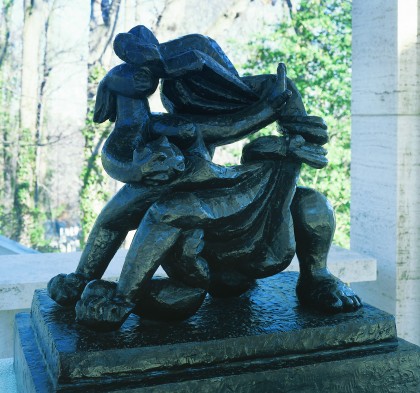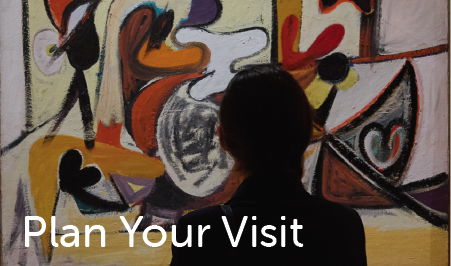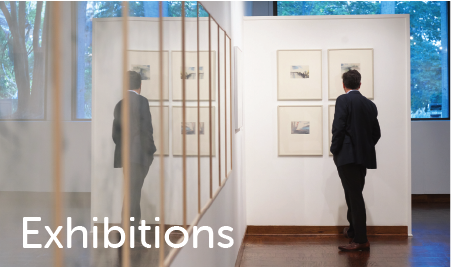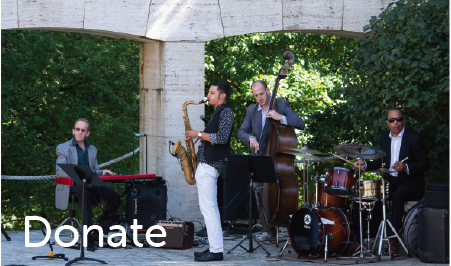Outdoor Sculpture Collection Jacques Lipchitz Hagar in the Desert (1891—1973) Born in Lithuania in 1891, Jacques Lipchitz is best known for his Cubist sculpture made after arriving in Paris in 1909. Moving to the city to study art, Lipchitz joined the vibrant arts community, befriending artists such as Picasso and Juan Gris. He absorbed the Cubist approach to painting into his sculpture, crafting figures composed of interlocking forms and abstracted shapes. Lipchitz was based in France until the German occupation, moving to the United States in 1941. Afterwards, Lipchitz focused on more personal and political narratives, often pulling from biblical stories. Hagar in the Desert is the third work in a series on the Old Testament figure Hagar, the Egyptian maidservant who bore Abraham a son: Ishmael. Lipchitz captured the moment that Hagar and Ishmael were cast off into the desert by Abraham and his wife, Sarah. The artist rendered the figures with bisecting shapes, rough surfaces, and rounded, exaggerated limbs, depicting Hagar gazing towards the heavens and clutching her child. Lipchitz focused on Hagar’s plight in response to the immense conflicts between the new State of Israel and its Middle Eastern neighbors. On this subject matter, he stated: “I wished to show my sympathy for Ishmael, who is thought of as the father of the Arabs in the same manner as the Hebrews are the sons of Abraham; so this is a prayer for brotherhood between the Jews and the Arabs. It is a concept which combines tragedy and suffering with tenderness and hope for the future.” |








